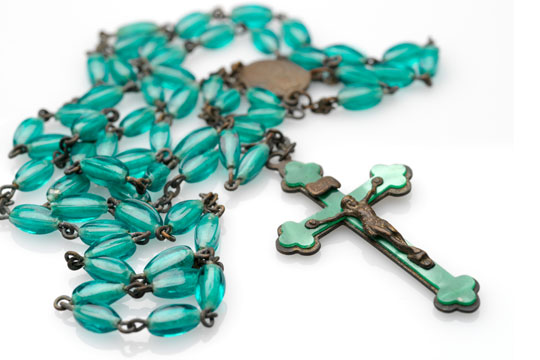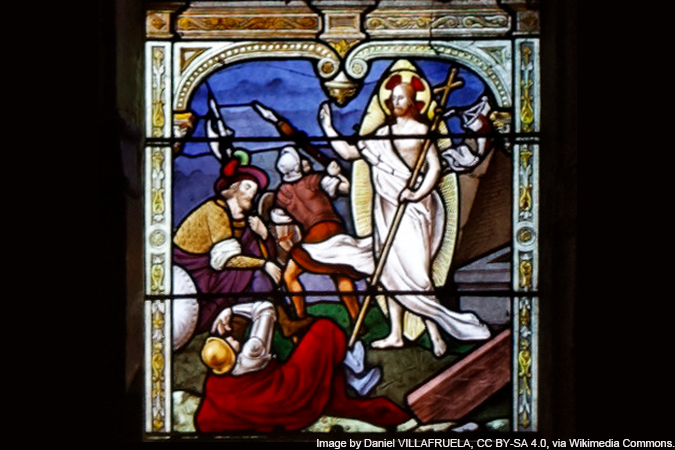
My earliest memory of a rosary was a string of plain stainless beads and crucifix that I had put around my neck. I was five. I still remember the look on my mother’s face. She was amused, but told me that wasn’t what a rosary was for. “It’s not a necklace?” I asked. “No,” she said. “It’s for prayer.”
My grandmother had matching rosaries of clear crystal beads, one necklace-like, the other a spiral bracelet. When we visited my grandmother’s house, my sisters and I would sometimes play dress-up and wear them for jewelry. The necklace eventually broke, its beads spilling away, forever lost. The bracelet I still have.
Eventually I asked my grandmother to explain how the rosary worked. What did you do with it when you weren’t pretending the beads were diamonds? She taught me the rhythm of the decades—the Our Father, Hail Marys, and Glory Be.
I remember neither my parents nor my grandparents ever praying a Rosary. I had no one to model it for me. It would be many years before I took up the practice of praying the Rosary myself.
I had two sets of rosaries, one mother-of-pearl and gold, given to me at my Confirmation, the other, like my grandmother’s, clear crystal, a wedding gift from my godmother. I learned the Mysteries of the Rosary by heart—Joyful, Sorrowful, Glorious, and Luminous. I memorized the Fatima Prayer, which was unknown to my grandmother, and the Hail Holy Queen. I would tentatively make my way around the beads. It felt awkward, old-fashioned, but also restful and hopeful.
I continued to pray the Rosary over the years in fits and starts. The more I have prayed these prayers, the more familiar they have become, the more they have become my own. I have learned to allow the repetition of the words of the prayers, decade by decade, to be united to my intention, to my meditation on the mysteries, and to the beating of my heart.
St. John Paul II encouraged us to make the Rosary a central part of our life of prayer. While he was pope, he said in the introduction to his Apostolic Letter Rosarium Virginis Mariae: “[The Rosary] has all the depth of the Gospel message in its entirety.” The letter explores the ways in which praying the Rosary is a pathway to contemplation, that ultimate state of prayer to which all the beloved of God are called, where the soul is united with its Creator.
Near the end of Rosarium Virginis Mariae we are reminded, “The Rosary is by its nature a prayer for peace, since it consists in the contemplation of Christ, the Prince of Peace, the one who is ‘our peace’ (Ephesians 2:14).” When every day we are made aware of renewed violence around the world, what better path can we Catholic Christians choose and teach than the path of peace embodied in the prayer that so perfectly unites us with the Queen of Peace and Prince of Peace, the most holy Rosary?




Great article!
For my the rosary (usually just a decade at a time- I haven’t quite worked up to a whole rosary in one sitting) and Mary became important when I became pregnant. I pray for my baby all the time… it’s peaceful to pray a Hail Mary while praying for my baby. It made me realize pregnancy can be scary and I’m sure Mary had some of the same fears/worries/anticipations that I do. Thinking of Mary like that has really helped me to get to Mary in a new way.